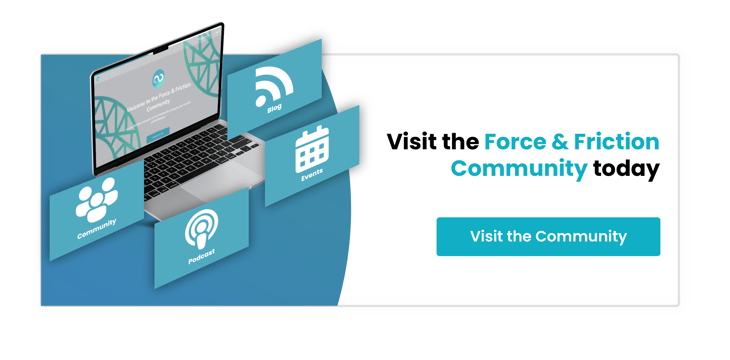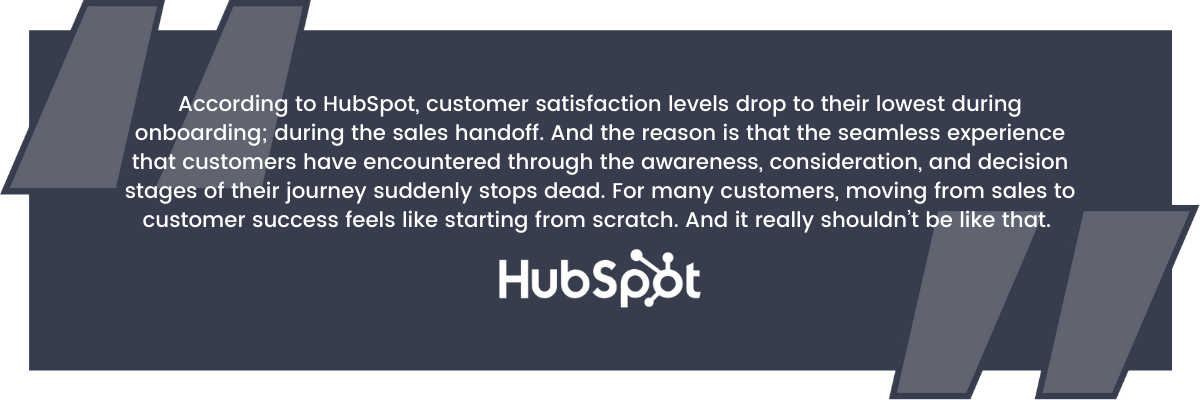
4 Onboarding Strategies to Skyrocket Your Customer Satisfaction
Picture this scenario. Your team has invested a huge amount of time into guiding a customer through the awareness, consideration, and decision stages of the customer journey. That customer has finally converted. And yet, they’re not using your service. They’re not interacting with your product. They’re starting to think about cancellation.
Everything had been going so well. So what went wrong?
Research by software provider Profitwell shows that customers who have a negative onboarding experience are statistically more likely to churn during their first 21 days as a customer than those with a positive experience, demonstrating just how vital it is for businesses to incorporate onboarding strategies into their sales handoff template. Effective onboarding could significantly boost the customer satisfaction score (CSAT).
So what strategies are most powerful in onboarding?

1. Be Proactive
KPMG’s ‘Still Searching for a Better Customer Experience’ research study found that 100% of customers with a high CSAT score received a welcome message from customer success within 24 hours after the sales handoff, with customer success teams introducing themselves and immediately establishing a new, dedicated point of contact going forward. This proactive messaging during the period of transition can help to reduce any confusion that customers feel, and work to re-engage those who could be rethinking their decision and considering moving to another service provider.
2. Be Transparent
Another interesting discovery from the KPMG report was that all high scoring CSAT customers were provided with clear, transparent instructions at handoff that made it very easy for them to begin using the service they’d signed up for. Getting started with a new service - especially if having switched from a competitor - can often be daunting for customers, so the more transparent and helpful customer success teams can be during onboarding, the better. Consider creating interactive guides or instructional videos that customer success teams can utilise to onboard effectively.

3. Be Seamless
Customers don’t want to feel like they’re starting from scratch; they don’t want to recap all the information they’ve already spent weeks - or even months - discussing with the sales team. And so a huge part of the sales handoff template should be dedicated to knowledge sharing; to providing all of the necessary information to customer success to prevent the customer having to go through everything again and again. This can be done through your CRM or customer service software. Encourage sales to document everything within the customer record, and sync this record with the relevant customer success manager at handoff.
4. Be Flexible
Once again, looking at the KPMG study, nearly three quarters of those reporting a good onboarding experience were given the flexibility to change to a different service should they find that the service they initially signed up for failed to meet their expectations. An aspect to ensure is incorporated into the sales handoff template is the differences between the short term and long term goals of the customer. If sales teams only share the short-term goals of the customer with customer success, it becomes challenging for customer success to guide them to alternatives that meet their longer term needs, which can only spell disaster for your customer advocacy efforts.
Why is Onboarding - and Satisfaction - so Important?
As it’s been shown that onboarding can create a major dip in customer satisfaction, this particular area of the customer journey should become a priority for businesses. Why? Because creating a pool of happy, satisfied, and engaged customers is key to success.
Contrary to popular belief, the customer journey does not end when they begin using the service. In fact, for those who enjoy a very positive experience, the journey can continue beyond the decision stage and into advocacy. When customers are happy, they are more likely to want to support your organisation, and the way that they do this is by advocating for your brand; by sharing their experience and influencing others.
At a time when customers are placing increasing importance on peer recommendations, customer advocacy has never been more vital. Your customers are social proof that your service brings value; they are real life success stories that you can’t generate through content creation, SEO, PPC, or any other form of marketing. Your customers are your business’ greatest asset. Don’t let their influence be wasted.








%20-%20Teal.png?width=500&height=130&name=Force%20%26%20Friction%20-%20Branding%20-%20Logo%20(White)%20-%20Teal.png)